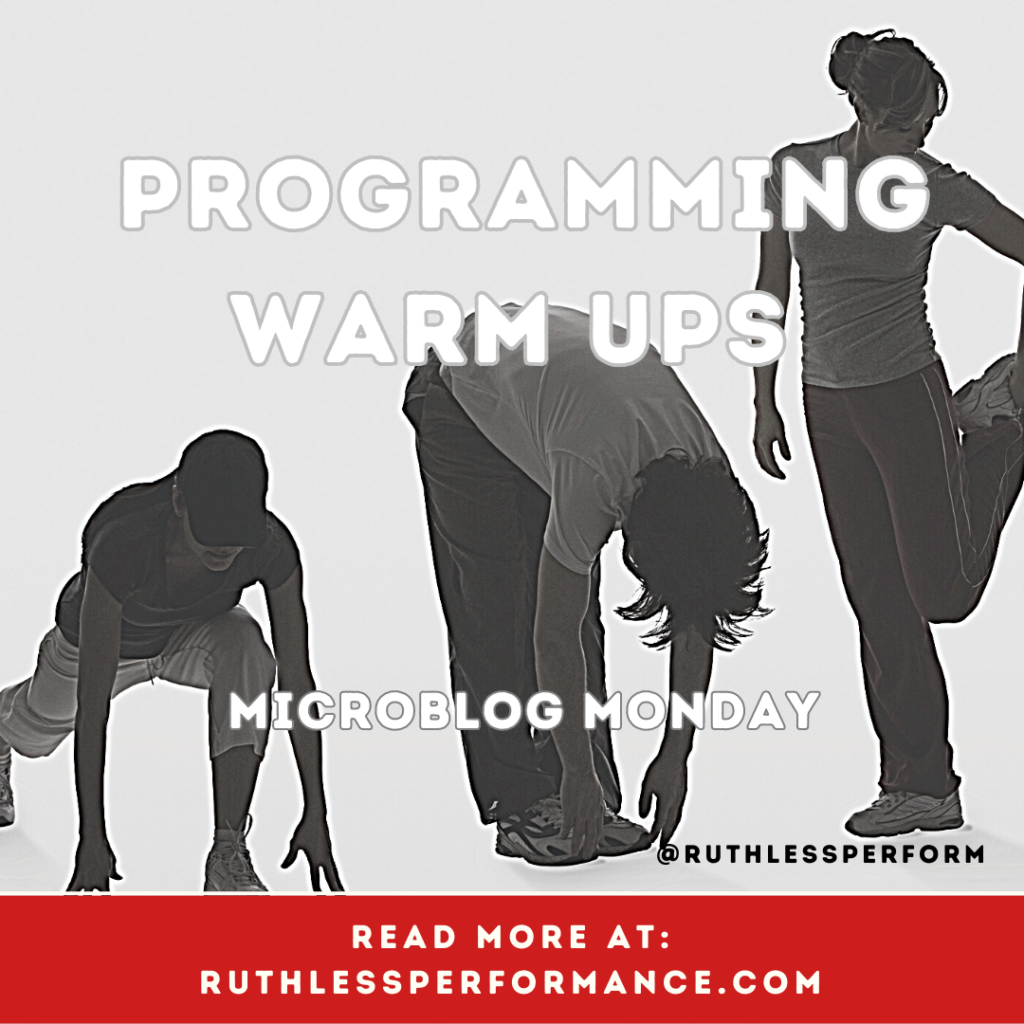Conventionally, warm-ups are understood to be a time in a workout prior to more vigorous exercise in which the heart rate is elevated and the core body temperature is brought up. Warming up, however, should be a very different thing for different pursuits.
Elevating the body temperature and heart rate are highly valuable but are not the only elements that should be considered when warming up. But this is commonly why people will hit the gym and immediately head towards the treadmill or stationary bike for a casual 5-10 minute jaunt. Sure these will provide the aforementioned increases in heart rate and body temp. But what are you missing by taking this approach?
What this Approach Misses
If time is limited (which it usually is), you should be trying to find ways to maximize your time in the gym. That’s why we think so strategically about what goes into our individualized (and team) warm up protocols.
Movement Proficiency
If you’re on a fixed machine like an elliptical, bike, or treadmill, you’re also on a fixed movement plane. This is time where you can be moving through greater, different, and more challenging ranges of motion to simultaneously improve flexibility, proprioception, and even balance.
Correct Imbalances
If you find that you have some type of postural deviation, be it front-to-back like upper cross syndrome, lordosis, kyphosis, etc., well then addressing these imbalances immediately upon entering the gym in your warm up is a great way to ensure that these subsets are being addressed.
Similarly right/left asymmetries could be addressed here as well.
Movement deficiency could make up a great part of a warm up. Here, I would be considering exercises like rotation, thoracic extension, or any of the variety of other movements that many people don’t get in typical day-to-day existence outside of workouts.
The Warm Up Paradox
An unusual fact in high-performance warm-ups is the inverse relationship between event length and warm up volume. Longer events, in the extreme–events like the marathon, require little to no warm up prior to an event.
For something as long as a marathon, we may recommend a few drills to warm up the hips, tibialis, ankles, and the postural muscles of the upper back.
Conversely, something like a 100m sprint or a 1RM test on a back squat may require a 30 minute long warm up. This can be attributed to the intensity and ‘stress testing’ of the various muscles and tendons that may occur under highly intense exercise like sprints or maxes.
How to Warm Up
This is going to be highly individualized but you should be ensuring that you are getting the most out of this time that you can.
Try to check as many of these boxes as you can and add more volume as the intensity of training after the warm up increases:
- Increase Heart Rate
- Increase Body Temperature
- Stimulate deficient and under utilized muscles
- Engage in complex, underutilized movement patterns
- Build Balance
- Prepare specific muscles and movement patterns for subsequent exercise
- Stretch, foam roll, and/or otherwise correct sites of potential/current injuries
As always, utilize your time wisely, and in doing so, your warm up can completely change the outcome of your training program.
Just something to think about,
–John

